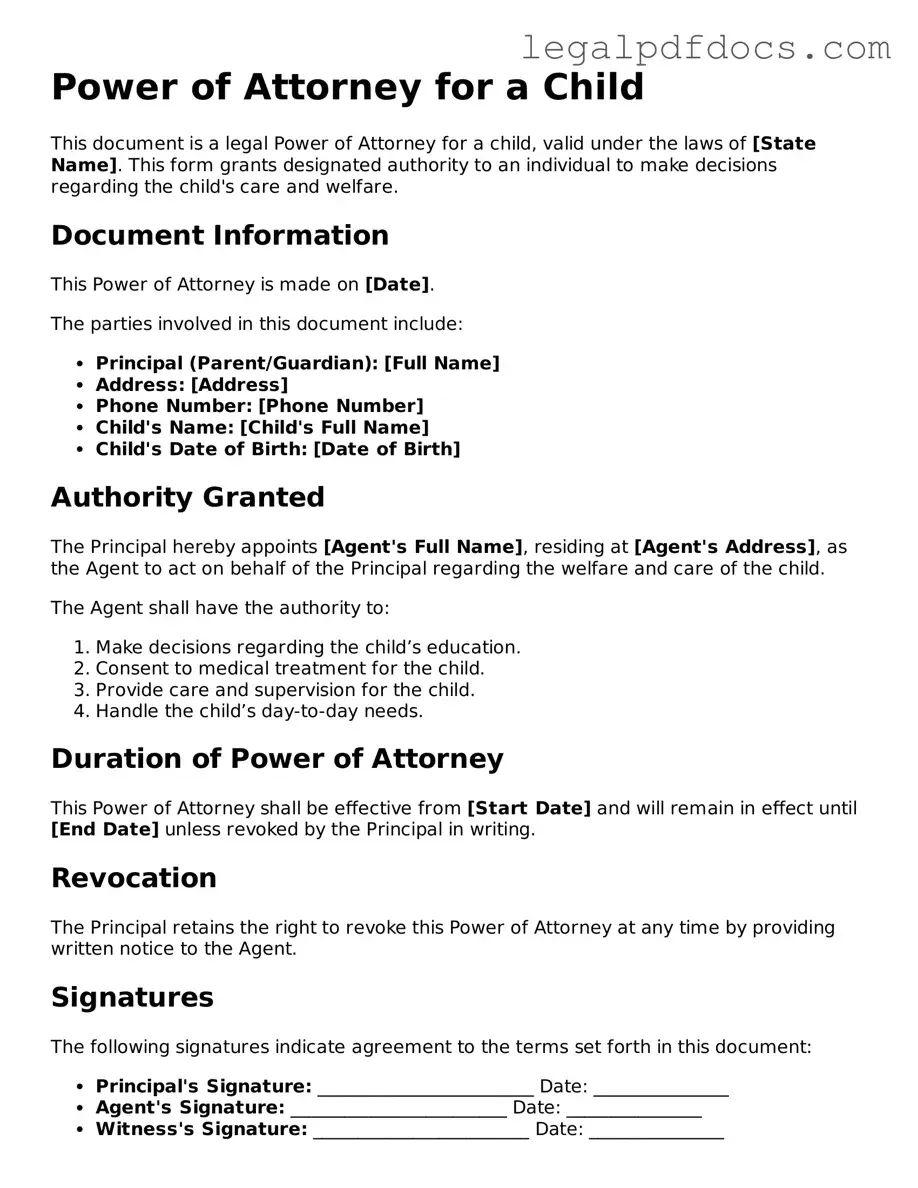Power of Attorney for a Child Template
The Power of Attorney for a Child form is a legal document that allows a parent or guardian to grant authority to another individual to make decisions on behalf of their child. This form can be crucial in situations where the parent is unavailable, ensuring that the child's needs are met without interruption. To take the next step, consider filling out the form by clicking the button below.
Open Power of Attorney for a Child Editor Here
